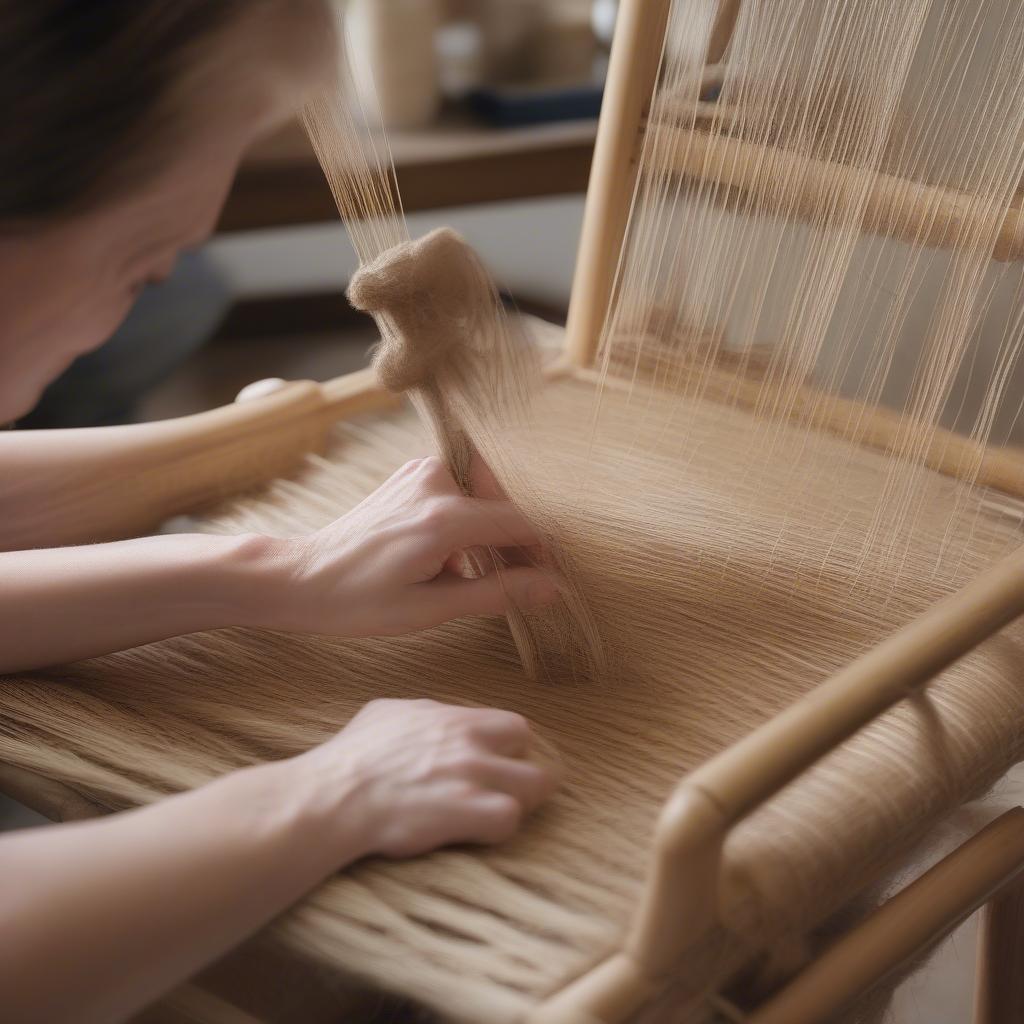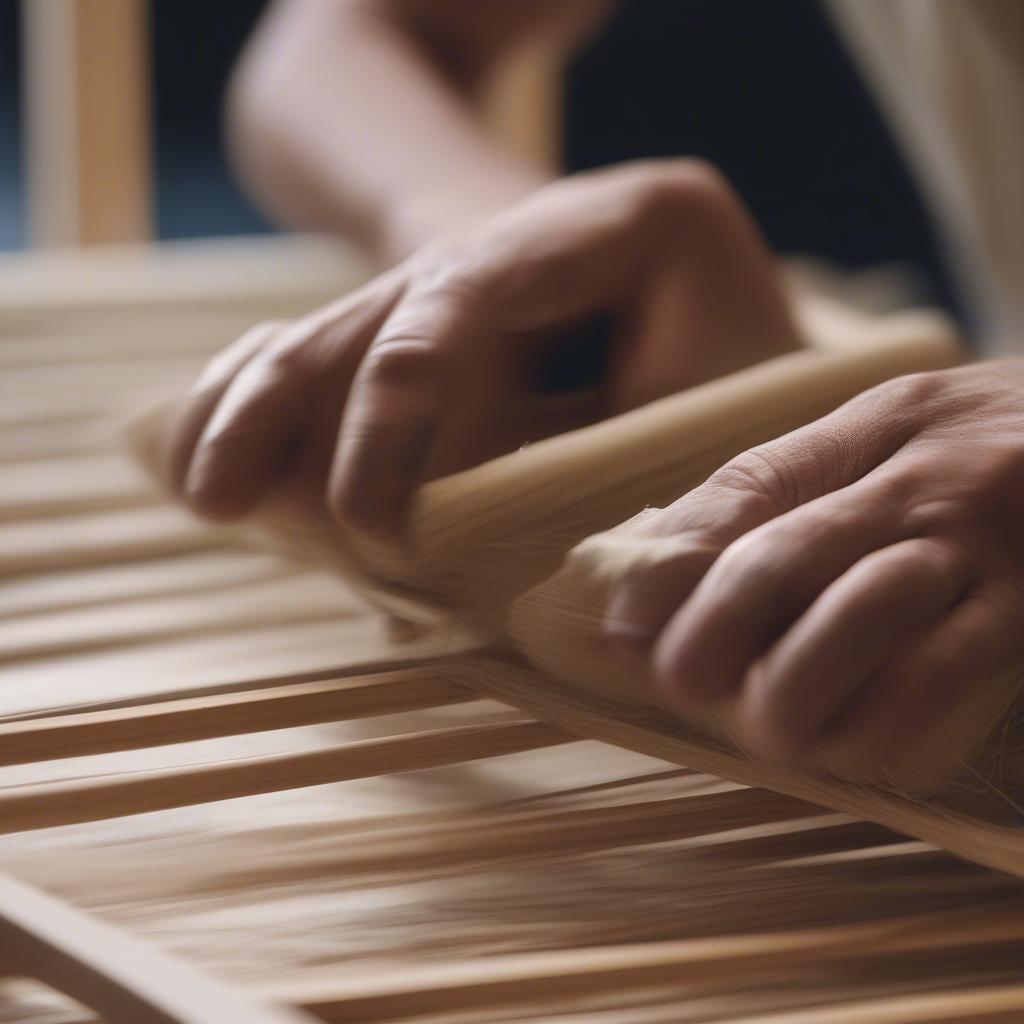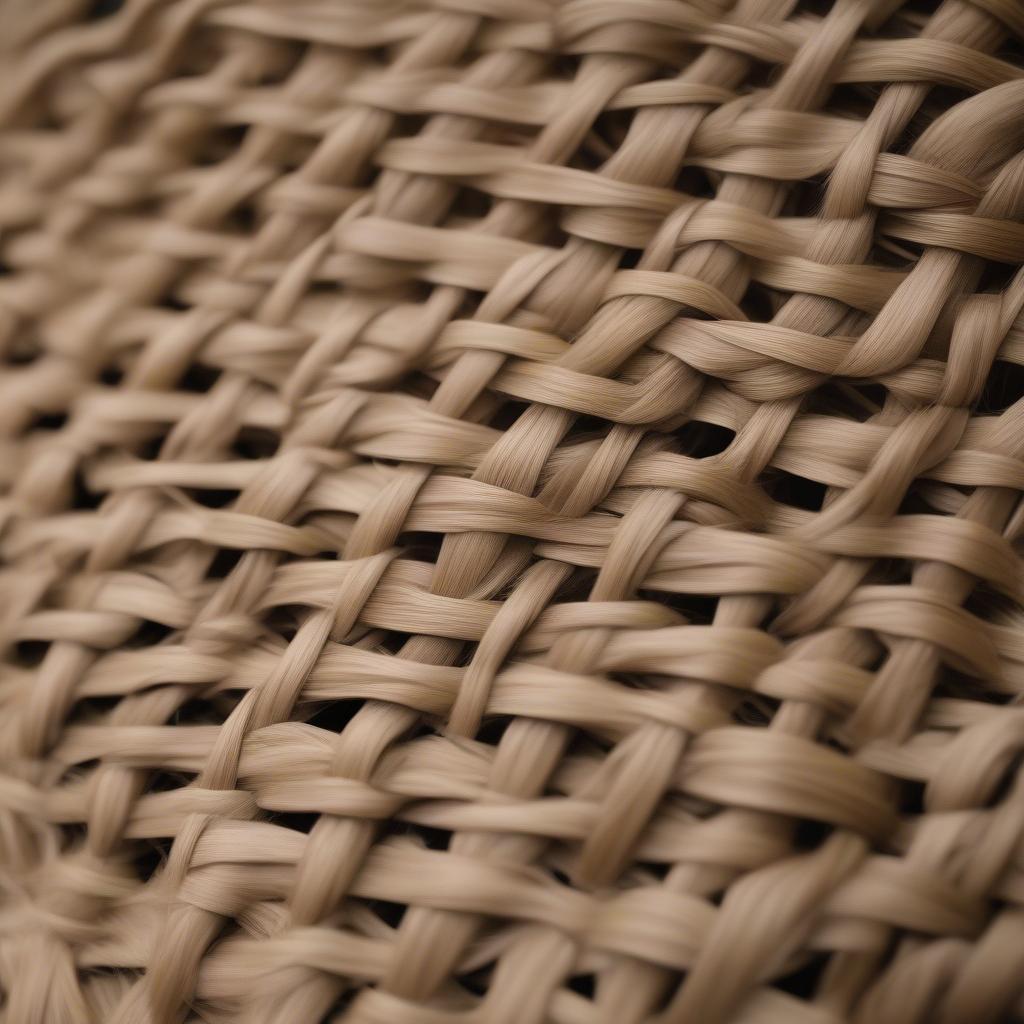Weave Chair
Weave Rush Chair Seat: A Comprehensive Guide
Weaving a rush chair seat is a rewarding craft that combines traditional techniques with natural materials. This comprehensive guide explores everything you need to know, from choosing the right rush to mastering the weaving patterns. Whether you’re a seasoned craftsperson or a beginner, this guide will equip you with the knowledge and inspiration to create beautiful and durable rush chair seats.  Close-up of hands weaving rush onto a chair frame
Close-up of hands weaving rush onto a chair frame
Choosing the Right Rush for Your Chair Seat
Selecting the appropriate rush is crucial for a successful project. Consider factors like durability, color, and texture. Pre-twisted rush is ideal for beginners, while experienced weavers might prefer working with loose rush for greater control and customization. There are various types of rush, including bulrush, seagrass, and paper rush, each offering unique characteristics. how to weave chair sash Research the different options and choose the one that best suits your project needs and aesthetic preferences.
Durability is key, especially for chairs that will see frequent use. Bulrush is known for its strength and resilience, making it a popular choice for everyday chairs. Seagrass offers a more textured and rustic look, while paper rush is a budget-friendly alternative that works well for decorative pieces.
What type of rush is best for a beginner? Pre-twisted rush is often recommended for beginners as it’s easier to handle and manipulate than loose rush. It allows you to focus on mastering the basic weaving techniques without the added challenge of twisting the rush yourself.
Preparing Your Chair Frame for Weaving
Before you begin weaving, ensure your chair frame is sturdy and free of any loose parts. A stable frame is essential for a successful weave. Clean the frame thoroughly and sand any rough edges to create a smooth surface for the rush.  Preparing a wooden chair frame for rush weaving
Preparing a wooden chair frame for rush weaving
Proper preparation prevents the rush from snagging or breaking during the weaving process. If your chair frame has existing rush, carefully remove it and clean the frame thoroughly before starting your new weave.
Mastering the Basic Weaving Techniques for a Rush Chair Seat
Several weaving patterns can be used for rush chair seats, from simple to complex. The most common pattern for beginners is the basic over-under weave. This technique involves passing the rush over and under the frame rails in a consistent pattern, creating a tight and durable seat. cane weaving chair seats As you gain experience, you can explore more intricate patterns like the herringbone or twill weaves.
Practice is key to mastering the weaving techniques. Start with a small project, like a footstool, to gain confidence before tackling a larger chair seat. Don’t be afraid to experiment with different patterns and techniques to find what works best for you.
What’s the easiest weaving pattern to learn? The over-under weave is considered the easiest pattern for beginners. It provides a solid foundation for learning more advanced techniques.
Maintaining and Caring for Your Woven Rush Chair Seat
Once you’ve completed your woven rush chair seat, proper care is essential to ensure its longevity. Avoid exposing the seat to excessive moisture or direct sunlight, as this can cause the rush to dry out and become brittle. Regularly dust the seat with a soft cloth or brush. outdoor patio chair weave If necessary, you can gently wipe the seat with a damp cloth, but avoid soaking the rush.
How do you clean a rush chair seat? Dust regularly with a soft cloth or brush. For more thorough cleaning, use a slightly damp cloth and avoid soaking the rush.
“A well-maintained rush chair seat can last for generations,” says renowned furniture restorer, Amelia Carter. “Regular dusting and avoiding excessive moisture are key to preserving its beauty and durability.”
Troubleshooting Common Rush Weaving Issues
Even experienced weavers encounter challenges. Common issues include broken rush strands, uneven tension, and loose weaves. Don’t be discouraged! These problems can often be easily resolved. Broken rush can be spliced or replaced. seat on chair with rope weaving Uneven tension can be adjusted by carefully tightening or loosening the weave. A loose weave can be tightened by adding more rush or reweaving sections.
“Don’t be afraid to unravel a section and start again if needed,” advises master weaver, John Miller. “It’s part of the learning process and will ultimately lead to a better finished product.”
 A finished woven rush chair seat
A finished woven rush chair seat
Conclusion
Weaving a rush chair seat is a fulfilling project that connects you with a timeless craft. By following these guidelines and practicing the techniques, you can create a beautiful and durable chair seat that you’ll cherish for years to come. So, gather your materials, embrace the process, and weave your own unique masterpiece. Remember, weaving a rush chair seat offers a satisfying blend of artistry and practicality, transforming a simple chair into a piece of functional art.
FAQ
- How long does it take to weave a rush chair seat? The time varies depending on the size of the chair and the complexity of the weave, but it can range from a few hours to a couple of days.
- Where can I buy rush for weaving? Rush can be purchased online, at craft stores, or from specialized suppliers.
- What tools do I need for rush weaving? The essential tools include a sharp knife, a measuring tape, and a sturdy frame.
- Is rush weaving difficult to learn? The basic techniques are relatively easy to learn, but mastering more complex patterns requires practice.
- Can I weave rush onto any type of chair frame? Rush weaving is best suited for chairs with solid frames and evenly spaced rails.
- What are some common mistakes to avoid in rush weaving? Common mistakes include uneven tension, broken rush strands, and inconsistent weaving patterns.
- How do I fix a broken rush strand in my woven seat? A broken strand can be spliced or replaced by carefully weaving in a new piece of rush.
Common Weaving Scenarios and Questions
- Scenario: My rush keeps breaking. Solution: Check the quality of your rush and ensure you’re not pulling it too tight. Soak the rush in water before weaving to make it more pliable.
- Scenario: My weave is uneven. Solution: Practice consistent tension and pay attention to the spacing of your weaves.
- Scenario: My chair seat feels loose. Solution: Add more rush or reweave sections to tighten the weave.
Further Exploration
For more information on related topics, check out these articles: lane venture excursion grass weave antique chair with vinyl cushions.
For any assistance or inquiries, contact our 24/7 customer support hotline: +84 388 951 999 or visit our offices in Hanoi, Vietnam or Tech Avenue, Suite 12, San Francisco, CA 94105, USA.
